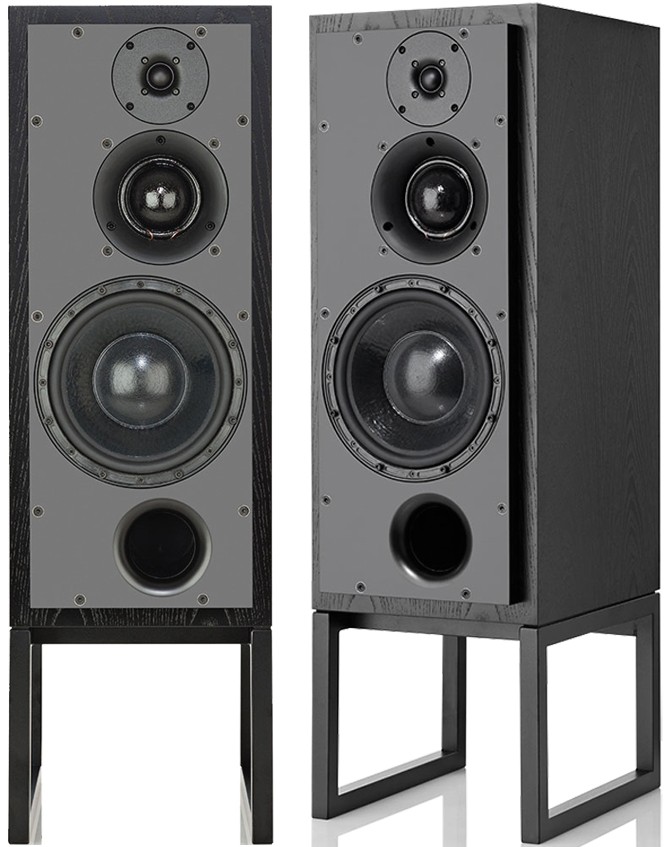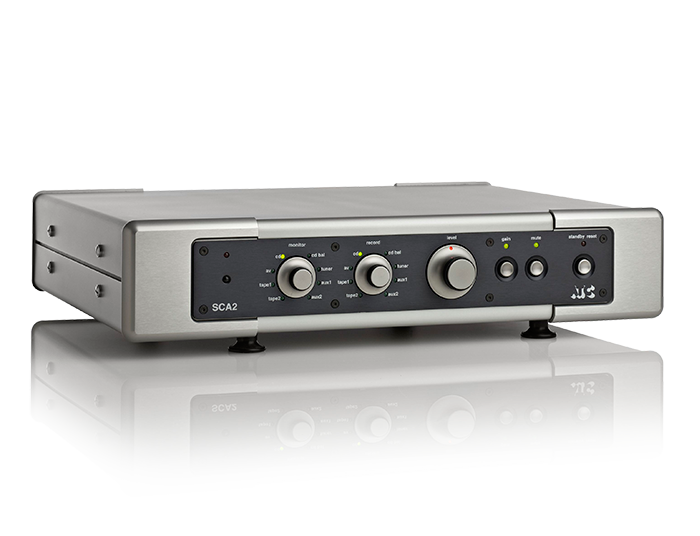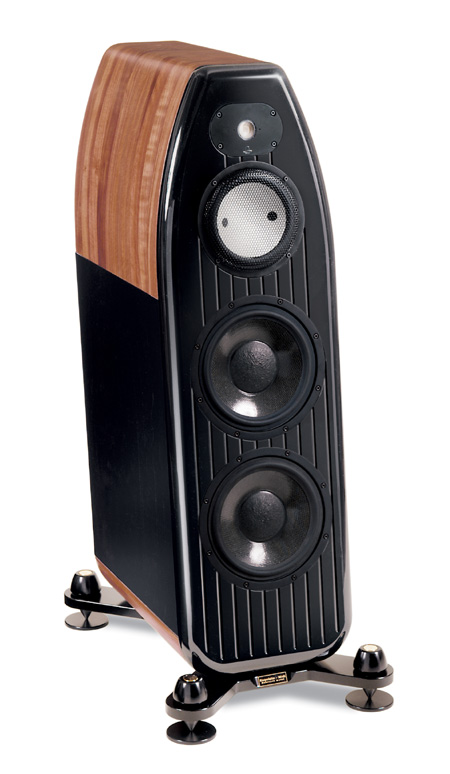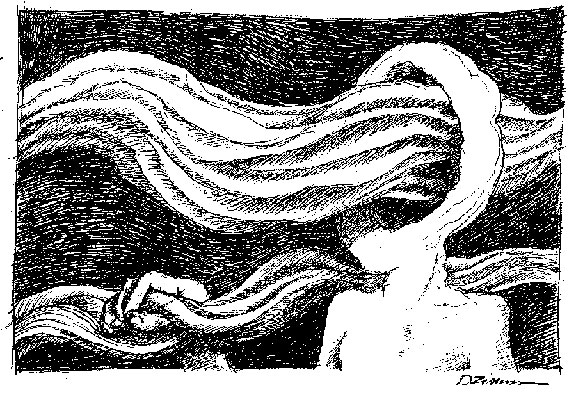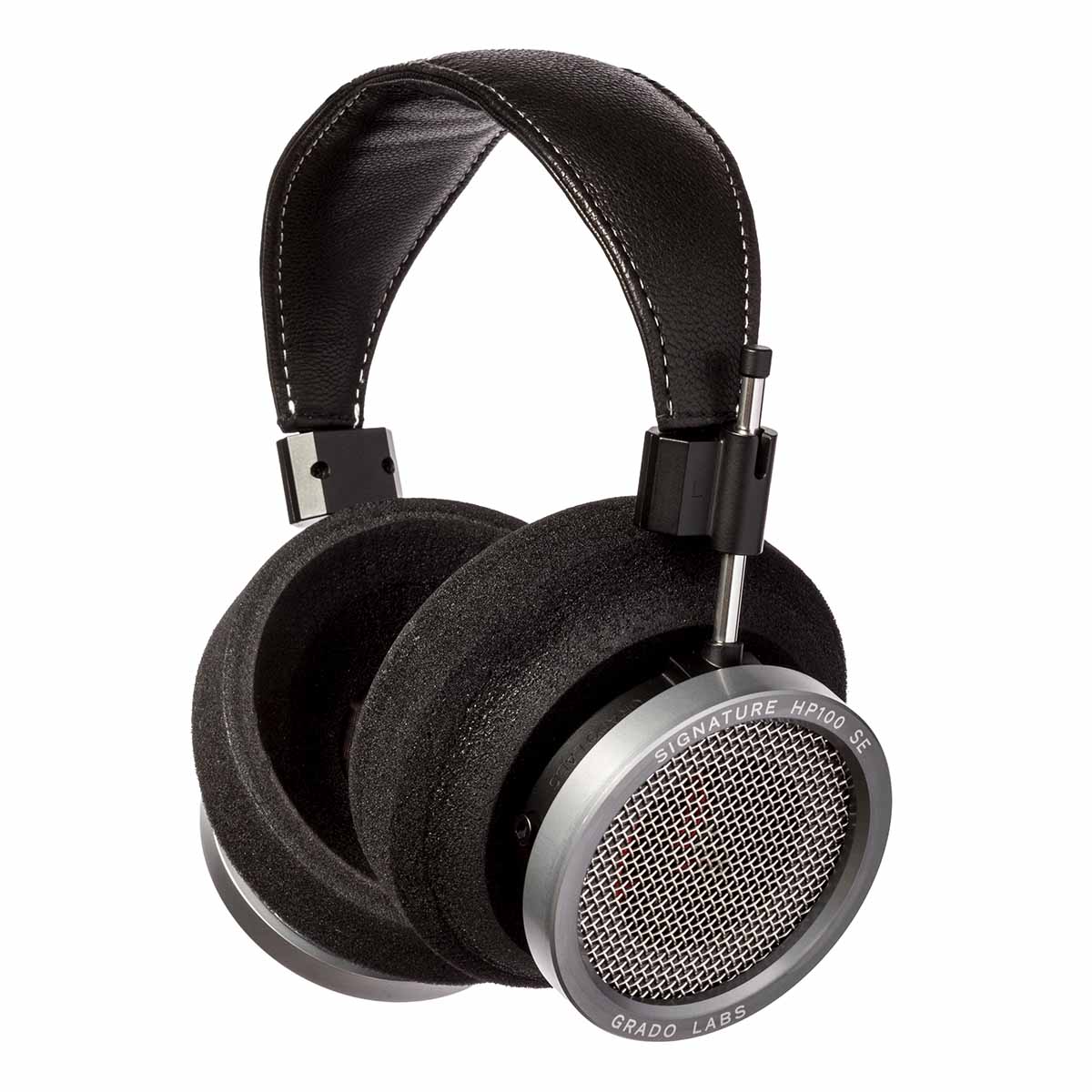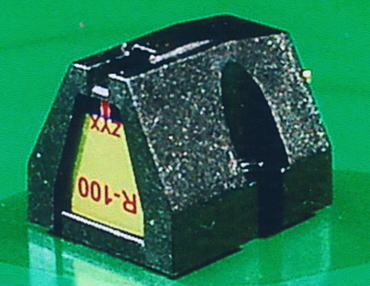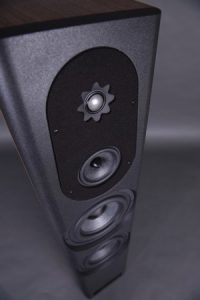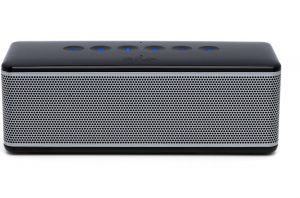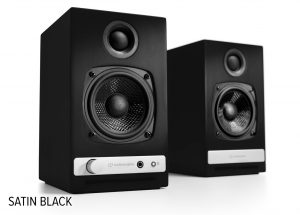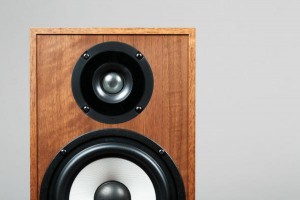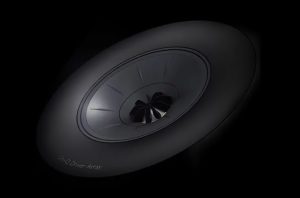This article, as reviewed by Francisco Madrid, Victor Chavira, and Larry Cox, originally ran when audioMusings was in print. Issue 13, 2001
This is going to be the easiest review I've ever written. Simply stated, the ATC system is the best sound I've experienced in my home. (But then, this is the first time I've had $15,000 dollars worth of audio in my living room.) The system consists of a preamp, balanced cables, three-way powered speakers, and dedicated stands. The most impressive part of the system is the speakers. The sleek-looking preamp features a button that boosts output. For most of my listening I kept the gain boost in the normal position, though some recording, particularly older ones, benefited from increased gain to resolve the finer details.
The ATC system had me glued to my seat throughout my listening sessions. The most notable aspect of the system was its supremely coherent and musical perspective. This is a system whose many complex parts truly work together. Incredibly, the substantial speakers are very transparent. I was constantly captivated by the sound of music in my room rather than the sound of the speakers. ATC has done an exemplary job of integrating the drivers, electronic crossovers, and dedicated amplifiers. I kept thinking to myself that this is how a three-way speaker should sound. The bass was deep, fast, and responsive, but never prominent or overbearing, as is the case with so many three-ways.
One example of the ATC's control and transparency could be heard with Ruben Gonzalez' latest CD, Chanchullo. This disc by the 82-year-old Cuban piano master is pure joy. Providing the foundation for this recording is Orlando Lopez on acoustic bass. These two musicians have been playing for so long together, it is said that each knows the other's notes before he plays them. Oftentimes, Lopez' bass tumbao plays against Gonzalez' left-hand chords. Other times they both play the same bass line. Only a speaker with excellent resolving power and definition can retain the personalities of the two instruments without blurring lines or lending too much energy to one voice or the other. The ATC speakers projected clean, balanced, richly-detailed images of piano and bass in a real space.
Another impressive quality of the ATC system was its absolute freedom from confusion or compression, even at deafening levels. Though out my time with the system, I got the feeling that I never truly tapped into its profound potential. Movie soundtracks, loud rock guitar fusion, big band Latin jazz, Bob Marley-nothing in my arsenal seemed to vex the mighty ATCs. Although the speakers have their roots in the studio, the system never sounded overly detailed or clinical, although I'm sure it's possible to make them sound that way. With my less-than-high-resolution front end, they very accurately reproduced the various recording techniques and venues of my favorite music.
Nevertheless, the system did not punish my senses whenever I listened to a less than well-recorded disc. I found very little to complain about with the ATC system. Any flaws in the reproduction were almost certainly the fault of my front end. For example, silibance still sounded sandy. With large symphonic recordings, the various sections of the orchestra were not precisely defined. Vocalists lacked the engaging breathiness one experiences with great tube amps. Finally, is the ATC system worth five and a half paychecks? If all of the sudden I found myself without the obligations of home and family, perhaps, but perhaps not. While the ATC system is an impeccable and powerful performer, my quest lies with harmonic enlightenment and beauty of tone. This is what my mind and spirit craves. The ATC system is like a new Jaguar. Sometimes one doesn't need all that luxurious speed and power to get where one wants to go. Victor Chavira
As I did with the Audio Note system, I installed the ATC system piece by piece. I was apprehensive about replacing my entire system in one fell swoop, afraid of losing that sound that I've been working at for so long, but my fears about the ATC system were unfounded. I started with the preamp. I'd been itching to hook my amps up to a fully balanced unit, to see how they work in balanced mode. The verdict, great! The system was quieter, the music opened up dynamically, and there was plenty of volume. Out went my speakers and in went the ATC 50as, which comprise the rest of the ATC system. These rather large, rectangular boxes are self-powered by built-in amplifiers, so my setup time didn't include hooking up an amp, but there's always a price to pay, and in this case it's the speaker stands. They are thin metal jobs that remind me of Mana equipment stands. The tricky part is lifting these heavy speakers onto the stands and aligning them up properly with the sticky strip that holds them in place. You have the option of single-ended or balanced connections to the preamp, and needless to say, I used the balanced option. Ha, ha, no speaker cables to worry about! With the two powered speakers, the preamp, and my usual CD spinner, I was set to go.
I played quite a few discs when listening to this system, but for some reason, whenever I happened to take notes there was an old warhorse of a disc in the player. The Grand Canyon Suite by Grofe on Mercury proved interesting. (This CD and the two Bernard Herrmann film music discs on Mobile Fidelity are father-and-son favorites around the Duran house, especially since my son recently started violin lessons.) Wow, does this system sound clean! On "Sunrise," the first movement of the Grofe piece, the horn section sounded clear and immediate, with no grain or glare. The ATC system displayed more dynamics than I'm used to. The orchestra was not thinned out in the upper midrange, as it is with my passive preamp. The bass was fuller, and had greater impact. This system displayed excellent dynamic swings. With this system, you have all the volume you want, without breakup. Pace and timing is excellent, and not only on fast and loud music. On Andrew Youngblood Hart's softer acoustic blues numbers, his finger picking sounded very clean, fluid, and fast. Vocals and instruments have a natural tone. On Diana Krall's Love Scenes (I told you I was using warhorses), her vocals were realistic.
I felt that the overall sound was on the "glowish" side of neutral. The sound had a kind of "lean warmth," if you will. I liked this, though I felt that the mids could use a little more air. Although small details could be heard at the end of a word or musical line, the decay didn't go off into infinity. It seemed to me that this solid state sweetness was brought about by the system's very grain-free presentation. The musical picture is very easy to slip into with these components. Does the ATC system do bass, you ask? My Gov"t Mule CD, Dose, was a sheer blast. Both the electric bass on Dose and the acoustic upright on the Diana Krall CD were tuneful and had very good pace and weight. The bass section on the Grand Canyon Suite was fuller and had more impact than with my regular system. I want to stress that the tonal balance is very even. Bass, midbass, midrange, and beyond blended very nicely. This is where the system design approach shows its advantages. The designer has answered the question of synergy in the speaker/amplifier interface here. The balancing act has been done for you at the factory, and it shows. When the ATC system was gone, Victor Chavira and I talked on the phone about it. (It is against aM's rules to do this beforehand, so as not to color each others' judgement, but we had both done our listening.) Both of us missed the ATC system, and were reluctant to return to our own. That says a lot. This system doesn't exactly sell for pocket change, but it is not ridiculously priced, as you get a lot of music and build quality for your hard-earned dough. Francisco Madrid
I really love my ATC SCM 20 loudspeakers, so when an opportunity to listen to their big brothers, the powered ATC 50as, came along, I leaped at it. (Truthfully, I pestered Steve Kriegling, ATC's importer, to get a listen to them.) With powered speakers, the appropriate amplifiers are provided, so there's no swapping, guessing, or wishing which amp(s) will work best. Moreover, with the ATC 50s, there is active equalization of the speakers, and no interaction between the amps driving the woofers and the amps driving the tweeters. This allows for things to operate much closer to their modeled or designed performance. There is also a matching preamp, the SCA-2, which means you only need to add a CD player and some cables and you have a complete system. More on the preamp later.
A lot of what I've said about my 20s applies to the 50s, but the resemblance isn't like the one between two members of the same family. The 50s are more like the same person, only bigger. They are the most dynamic sounding speakers I've heard, with a very rich, slightly dark timbre that conveys the broad range of musical textures with equal aplomb, and with an electrostatic-speaker-like clarity. Typically, speakers that are rich in timbre don't possess a see-through sound quality, and speakers with see-through quality are rarely rich in timbre. Instead, they often have a thin, lean, and bright character. ATCs have a unique ability to present timbre cleanly, clearly, and richly. There are all kinds of things you can say about speakers, like "The bass was as deep as the Grand Canyon," or "Hearing the highs was like listening to angels sing" and so on, but none of that came up while I was listening to the 50s. Rather, I was instantly drawn into musical events. Music was occurring in my room. My experience was of a live event, even if the recording was made in a studio. For me, almost any live musical event has an excitement, whether I like the music or not. When the music is performed with particular feeling, it not only captures your attention, but it captures your heart and plays the strings of your emotions. Your mood ascends or plummets. This was what happened to me with the ATC 50s, on virtually every track I played. When a recording was poor, I simply felt I was hearing great music in a bad room.
The 50s are not only, by far, the most expensive speaker I've had at my place, but they are also the most exciting. Imagine an effortless ability to go from loud to soft to loud with the speed of a bullet. The natural roller coaster of music is easily conveyed, with a fantastic sense of its ebb and flow. Whereas some speakers recreate a musical event by reproducing images of it, the ATCs do this by conveying the woof and warp, the timbre and dynamics of the original event. Yes, images are firmly displayed in a soundstage-not terribly important to me, though it may be to you. What is important to me is that instruments are easily distinguished, timbrally and dynamically. Brass instruments, with their broad dynamic range and timbre, are heard clearly, at the same time as single key strokes and pounding chords on the piano, which are conveyed within own unique dynamic and timbral range. All this contributes to the "liveness" of the event. Playing "Crazy 'Bout an Automobile" (from Ry Cooder's Borderline), a quintessential bar tune, with the appropriate volume level, what came to mind for me, honest to God, was looking around for a waitress for a beer. A very strange experience for a tea-totaler!
The 350 watts driving the 50s provided ample bass on all of the music I played. Holst's Planets was magnificent, with the thunder of Jupiter easily conveyed. On Santana's "Oye Como Va?," the full, round, vibrating electric bass conjured up impressions of the garage band a friend of mine used to have. Speaking of electric bass, even silly crap like Primus' Pork Soda rocked hard and deep. YEAH! And of course, the standup bass from Joe Williams' Everyday-Live at Vine Street had the woody growl and rippling excitement that my dad's stand up bass had in our house. In none of these instances was there anything lacking. From the lower midrange through the lower treble, the sound was sweet and detailed, clear, clean, fast, delicate, and just friggin' amazing, quite like an iron fist in a velvet glove. The sound was simply a celebration of all that is right. Joe Williams' throaty growl was wonderful, rich, raspy and liquid. Female vocals were clearly and easily presented. The vocals in "Yulunga," from Dead Can Dance's Into the Labyrinth, were easily revealed as a mix of androgynous male and female vocals interweaving like strands of ivy up a flag pole. On "Amado Mio," from Pink Martini's Sympathique, the voices were rich as a truffle-sweet, sexy, and very inviting. A smile passed across my face listening to this. There was a clarity and ease about listening to these speakers. Everything was easily discernible. The register and voice of every instrument was unique and clearly distinguished from instruments near the same frequency. Horns on Gene Harris' Tribute to Count Basie were easily distinguished, though similar in sound. Instead of a mesh of instruments with one voice, there was a chorale of instruments. The 50s' very top end is open and clear, in a typically British way. This is not the sound of, say, the Odeon Toscas, Joseph Audio speakers, or Martin Logans, which are also open, clear, and quite extended. The very last bit of detail isn't as highlighted or pronounced. There is no artificial sense of air about instruments.
There is one respect in which the ATC 50as weren't absolutely wonderful for me. The lower treble just wasn't as sweet and meltingly beautiful as that of a few speakers I have heard, like the original Quad ESLs. There is a delicacy about the Quads that is clear and clean, while delicate as a snowflake on an eye lid. I must acknowledge that I truly enjoy sweetness that melts you in your seat, and that this is not the sound of ATC speakers, save for the occasional disc. That said, the 50s were a wish come true for me, even though I was missing that meltingly beautiful lower treble.
ATC's commitment to reproducing the original event may not work for you. The magic of the ATCs isn't as present at lower volume levels. Though they still sound pretty damned fine, they like to be played loudly, like the original event, and live music isn't created at volume levels for going to sleep. If you like to be lulled by your audio system, look elsewhere, but if you are authentically interested in hearing live musical events in your home, you should consider the ATC 50as.
SCA-2 Preamp
The solid-state SCA-2 preamp has a slew of inputs, one balanced input and one balanced output, and a phono section. It is easy to use, with a separate source selector for play and record. It is elegantly designed and nice to look at. I've favored tube preamps for a long time, so I was expecting to hear a sound akin to finger nails on a chalkboard, and was surprised to enjoy the SCA-2. The SCA-2 and my tubed E.A.R. 802 preamp provided a surprisingly similar sound. The most substantial difference was that the 802 required that I "listen into" the sound to extract the details. For me this is an attribute of E.A.R. equipment: lots of detail, just not "in your face." It's not that the SCA-2 throws detail in your face, just that it was a bit more forward. The E.A.R. imaged nominally better, and was richer and fuller-sounding, although with less clarity in the starting and stopping of instruments. This for me is more like what it is to be at a concert, along with lots of "human Echo Busters." In contrast, the SCA-2 has the sound you'd expect from being right in front of a mixing console while creating a music recording. The SCA-2 discloses its studio origins.
Both the phono and line level sections had a similar character-clarity with no obvious colorations. Bass was a little "whiter" sounding than the E.A.R.'s, and while either could be called correct," I preferred the E.A.R.'s fuller, rounder bottom end. I found myself relaxing a little more with the E.A.R. The SCA-2's top end was more detailed and extended, though again, for this listener, either could pass as "the real thing. Larry Cox
ATC SCM-50asl Loudspeakers
Retail: $14300 (Black Ash)
SCA-2 Preamplifier
Retail: $7100 plus $700 for the SPH-2 phono stage
ATC




